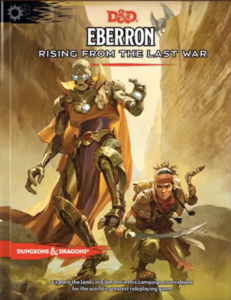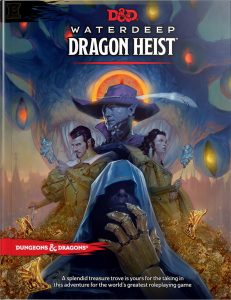Happy New Year!
If you’re anything like me then the start of 2020 has you filled with ideas and excitement. I’m working on putting together a new campaign for my Dungeons & Dragons group. Now, what is a campaign? A campaign is a longer-form game that lasts many sessions (sometimes going on for years!) and follows a core group of characters.
If you’re looking to start a campaign of your own, I have some tips to help get your game off on the right foot.
1. Have a session zero.
Session zero is where everyone sits together and goes over ground rules, ideas, and expectations. This is where you and your players can discuss the type of game everyone wants to run. If you’re wanting to run a dark, graphic horror game and your players are looking for a fun, light-hearted adventure, this is where you can find that out before everyone ends up miserable in a game with mismatched ideas.
This is also where you can go over safety tools to use in your game. Making sure everyone is comfortable with the events of the game (like level of gore, torture, romance, etc.) can head off a lot of problems and potential out-of-character conflict.
2. Let the players help build the world.
Letting your players have stakes in creating the world will make it all the more real to them. Allow them to describe the town their character grew up in, what the cleric’s temple was like, or how the wizard first discovered magic.
Having your players build a small part of the world your campaign takes place in helps them feel ownership of the world and story too. Let them make a mark from the start.
 3. Connect the players to one another.
3. Connect the players to one another.
Give the players a connection to each other from the start. The cliché is a bunch of people meeting in a bar, but in my experience, it’s monumentally helpful if some of the characters already know each other. Building those relationships is something you can also do in session zero.
Perhaps all your players know one bar owner who has called them all together for a favor. Or maybe the fighter and the paladin once fought together against a demon army. By creating that connection, you make the team even stronger and more cohesive.
4. Something big at the start.
There are two options for this: let the players win big or lose very badly. Plan something that will unify the group.
When I say, grant the players a victory early on as a team, I don’t mean letting them run over an enemy without any resistance. Give them a real, meaningful victory right at the start. This opens the campaign on a high note and is especially useful for engaging new players.
Alternatively, if the players are all captured together or barely survive a dragon attack, they will unite to keep one another alive and get revenge. A shared goal is instantly unifying and builds anticipation for future sessions.
 5. Listen to the players.
5. Listen to the players.
While you are setting up the campaign, ask your players what they’re hoping to get out of the game. Maybe they want to explore their character’s tragic backstory; maybe they have always wanted to fight a mimic; maybe they want to explore particular themes. Not only does this keep your players invested in the campaign for the long haul, but it also gives you some free ideas to build into the story you’re creating. At the end of the day, your job is to keep things fun for everyone!

These are great. Will definitely use in the future. I especially like the session zero idea. We did that with one campaign I’m playing and not with the other, and you can tell the difference.